Timeless and classic, decorating with Staffordshire dogs is a design trend that has been popular since the early 1800’s. These proper English dogs are making a huge come-back in design, they seem to be popping up everywhere!
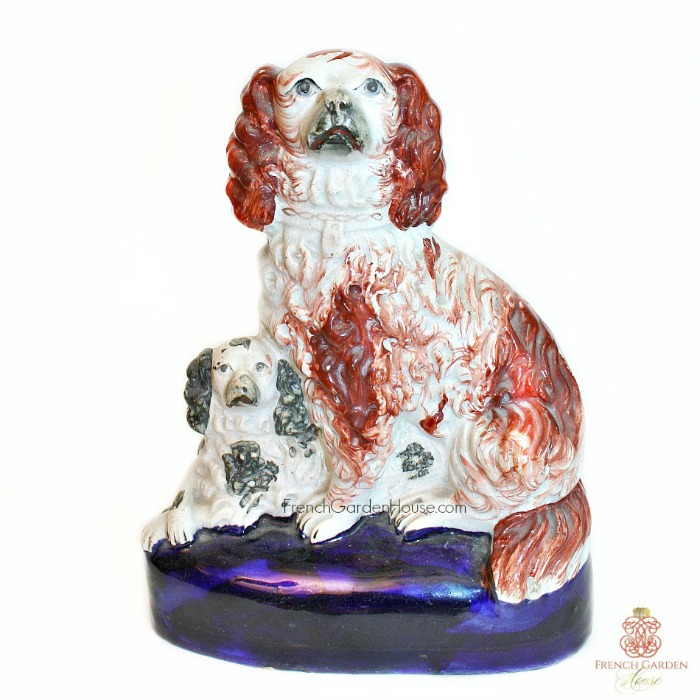
Originally created to be displayed on fireplace mantels during the Victorian Era from the early 1800’s, Staffordshire pottery dogs came from the many pottery companies located in the Staffordshire area of England. This area has an abundance of local clay and coal, and these resources were used to produce the many charming but somewhat unsophisticated figures to sell to the working class.
Other animals were produced, and royalty, famous persons, even famous criminals! But I love the dogs best.
Also called “pot dogs” or “china dogs,” the ceramic figures were made by pouring liquid clay {slip} into molds. Once the clay figure had dried, it was fired it to a hard “bisque” state, covered with several coats of clear glaze and fired it again at a higher temperature.
After the second firing the figures were hand painted with china paint, in several coats, firing between each coat.
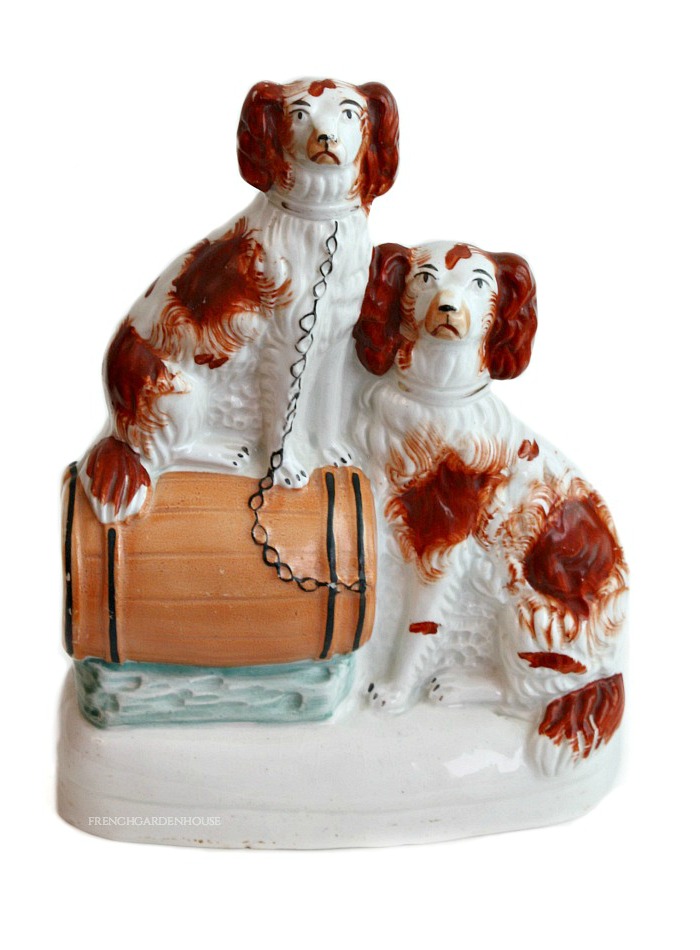 19th CENTURY STAFFORDSHIRE DOGS ON A BARREL
19th CENTURY STAFFORDSHIRE DOGS ON A BARREL
Staffordshire potters modeled their figures after Cavalier King Charles Spaniels, named for King Charles II of England who was constantly surrounded by these little dogs at court.
But it was Queen Victoria brought the Cavalier King Charles Spaniel to prominence, her love for her own spaniels attracted the attention of Staffordshire potters in the mid-19th century. The queen’s beloved companion “Dash” became famous and the subject of many artists painting, drawings and figures. It is recorded that on the day of her coronation, she rushed back to Buckingham Palace and ran up to her room to give Dash his bath.
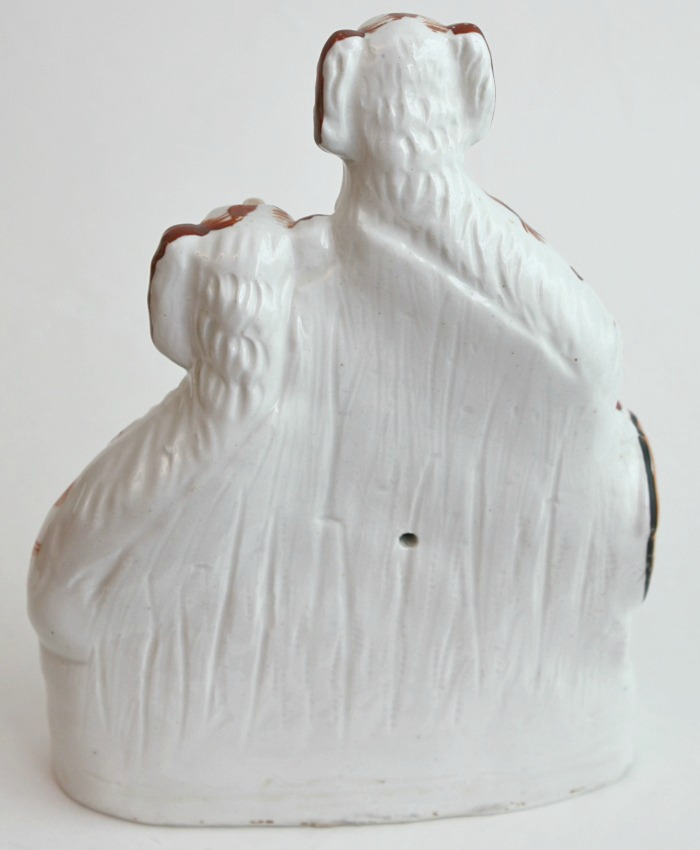
Often the Staffordshire production jobs were worked on by children as young as six years old.
The Staffordshire figures were meant to entice the interest of the working class, they were inexpensive pieces of pottery that were sold on trays in the street.
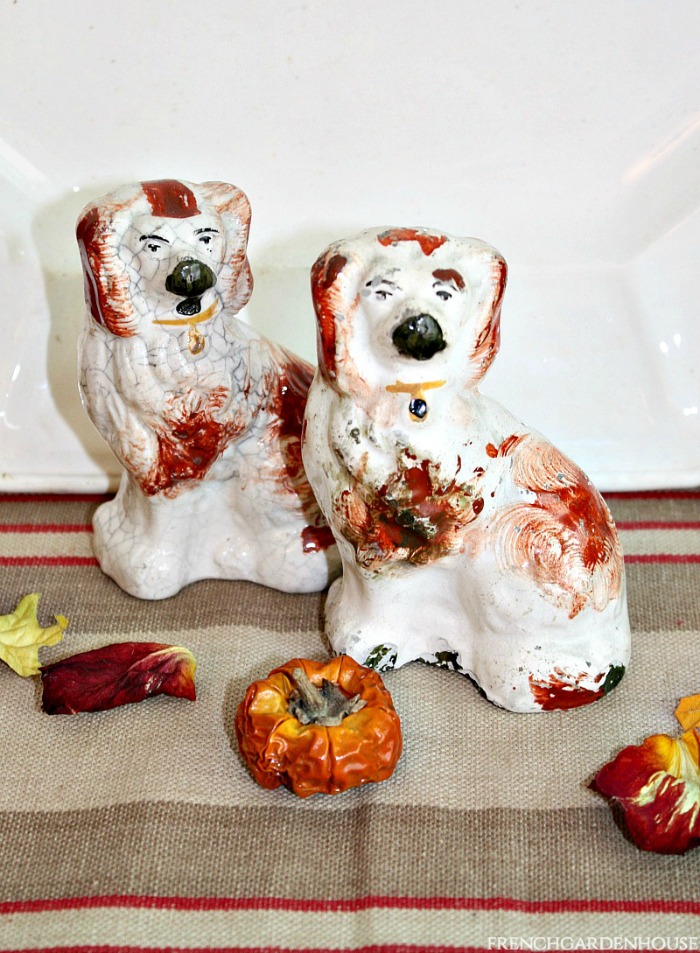
Many of the dogs are a little crudely made and/or brashly painted, such as these two little brothers, above. But there is no denying that even the most in-elegant dogs are charming, and capture the fierce haughtiness of the Cavalier Spaniels!
 19th CENTURY CREAM STAFFORDSHIRE DOGS PAIR
19th CENTURY CREAM STAFFORDSHIRE DOGS PAIR
Not just in the brick red, brown and black colors, the Staffordshire dogs so beloved and collected today come in all white.

The earlier figures were modelled in the round, as you can see on this dog above, the back was also modeled. Later in the 1800’s, the backs became “flat” – which was less expensive to produce and easier to make.
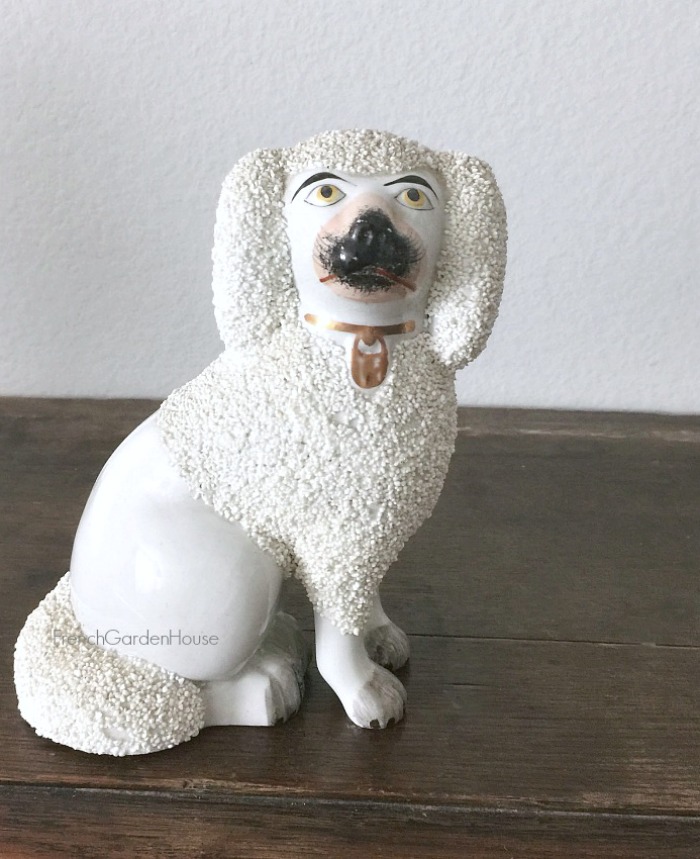 WHITE ANTIQUE POODLE STAFFORDSHIRE DOG
WHITE ANTIQUE POODLE STAFFORDSHIRE DOG
This dog has the more rare to find open feet, and is a poodle, covered with “bocage” to resemble his curly fur. He has such an expressive face!
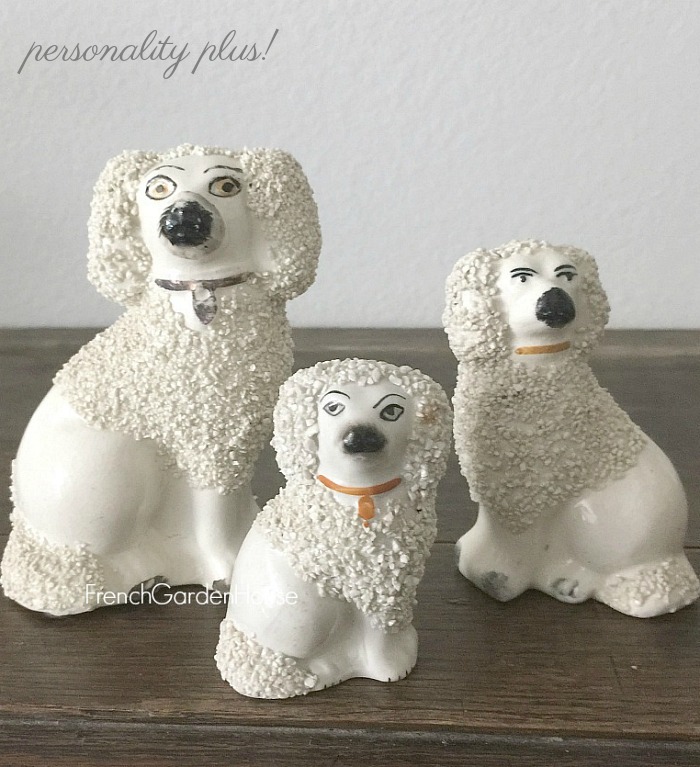 ANTIQUE STAFFORDSHIRE WHITE POODLE FAMILY
ANTIQUE STAFFORDSHIRE WHITE POODLE FAMILY
And this is a little family grouping I bought at the same time. Each has its own personality!
Most Staffordshire pottery dogs are unmarked, although the smallest of the little white dogs above has a maker’s mark for Kent, England.
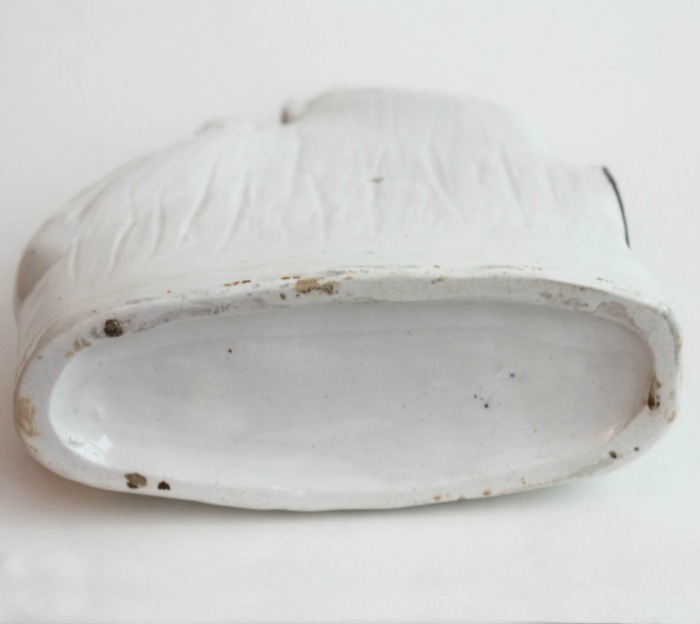
When buying Staffordshire dogs {if you’re not buying them from FrenchGardenHouse} look for wear to the bottom. Remember that this was never intended to be high quality porcelain, so they should not be perfect.
The figure should have small, as in tiny, holes to allow for the figure to let steam escape in the kiln. Since many reproductions have been and are still being made, a large dime sized hole is a clear give-away.
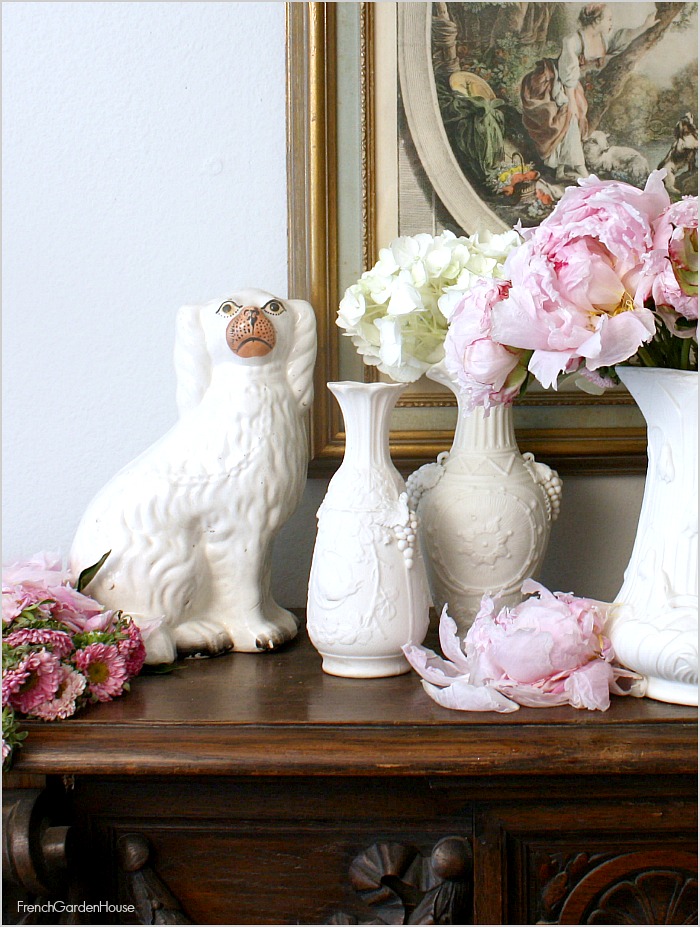
Most collectors have at least one pair of Staffordshire dogs, but their beauty and personality truly become apparent when they are displayed in a “pack.”
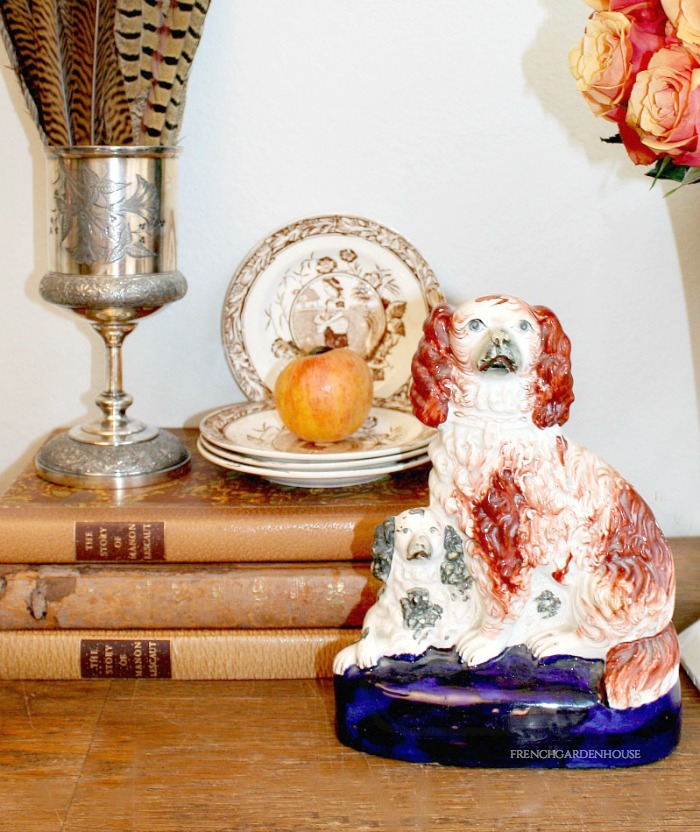
STAFFORDSHIRE DOGS – LOVE THEM OR HATE THEM?
à bientôt

Shop for the best in French Antiques, furniture with the patina of age, vintage accessories to delight you and your family & friends, and French Country utilitarian pieces. Treasures that make your home fresh, beautiful, inspirational and uniquely yours. Visit our shop FrenchGardenHouse.com

 Your Cart
Your Cart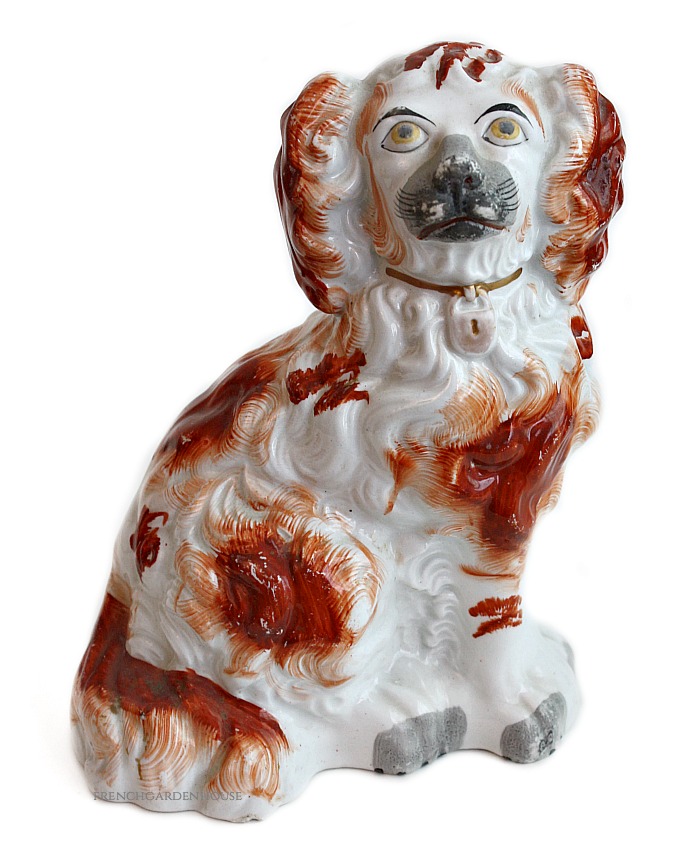
Such an informative post, Lidy! I have a few sets of these sweet dogs around, and see them from time to time at estate sales. I hope you enjoy your Tuesday, sweet friend!!!
Thanks so much Shannon, I love the Staffordshire figures, they are so charming aren’t they? So exciting that you have a few, I am sure that they are very happy living in your beautiful home.
I absolutely love these dogs! I just purchased my second
Pair. Thanks for the information, it’s a great reminder of what to look for
Thank you! I fell in love with these dogs in Emily Sutton’s art. I recently found one at a flea market, but no idea if it’s actually an antique or a reproduction. It doesn’t look old. Still, it looks wonderful against the books. I’ve noticed that some of the dogs have odd thatch marks painted on them, and mine has Xs on it. Some of the black spots aren’t as glossy as the other areas.
Hi,
Do you have any information regarding the Staffordshire dogs made by Arthur Wood? Are they just cheap reproductions?
Mine have a larger hole in the bottom and stamp “Made in England” and ”Wood” with numbers 4561.
Grateful for any information you can give.
Susan, Arthur Wood produced Staffordshire dogs in the 1960’s in England. While they are not antiques, they were painted by hand and had gilt details added by hand.
My Staffordshire dogs only have number 3 written on them and a small hole on back of them. Any info would be grateful.
Debbie, many of the old Staffordshire dogs don’t have a maker’s mark. The number 3 could relate to so many things, a style variation, the number of the artist who painted it, etc. there really is no telling anything from that sadly. I h.ope you love and enjoy your dogs!